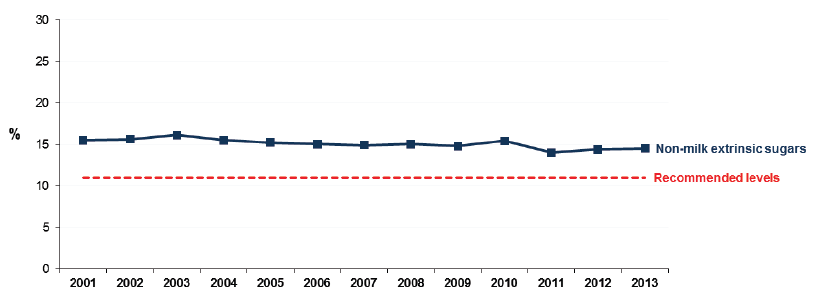Obesity indicators 2015
Latest data for indicators selected to monitor progress for our Prevention of Obesity Route Map (2010). Most indicators are updated up to 2014, but for some indicators data are more or less up-to-date than this.
This document is part of a collection
Added sugars
Indicator Source: Food Standards Scotland
Latest Results
- The percentage of food energy contributed by added sugars has remained relatively stable since 2001 at around 14% to 16%. In 2013 the figure was 14.5%.
- Intakes remain higher than the Scottish Dietary Goal of less than 11% of food energy.[7]
Figure 7. Proportion of household food energy from added sugars, 2001-2013

About This Indicator
Desired Outcome:
Reduced energy intake.
Relevant Route Map action:
All energy consumption actions.
Indicator Source:
- Food Standards Scotland commissioned Scottish specific analysis of population level data from the ONS Living Cost and Food Survey.
Equalities:
Information is collected on differences in food and nutrient intake by deprivation (using the Scottish Index of Multiple Deprivation (SIMD).
Geography available: Population level information is collected on differences in food and nutrient intake by urban/rural classification.
Rationale for including this indicator:
The aim of this indicator is to monitor change in the proportion of adults and children consuming energy dense foods. As noted above, prevalence of obesity indicates that energy intakes currently exceed energy requirements with associated health problems.
Factors influencing this indicator:
- Availability, cost, and access to different food types.
Contact
Email: Daniel Adams
There is a problem
Thanks for your feedback